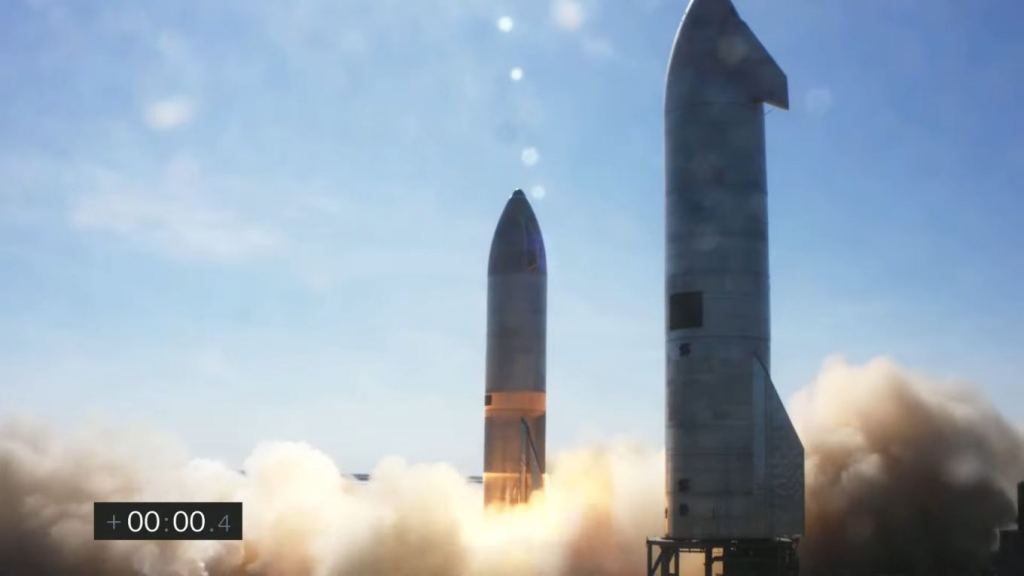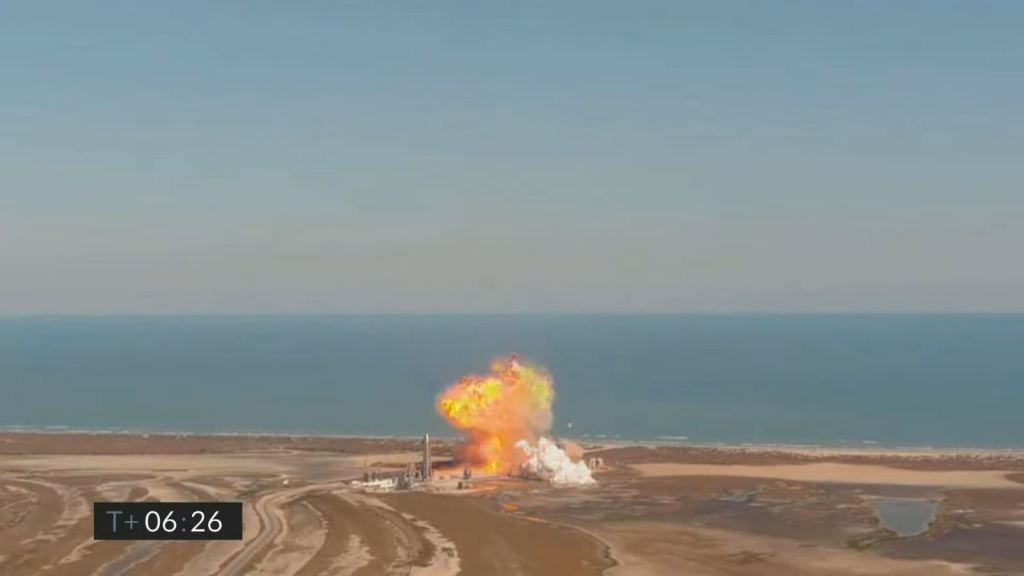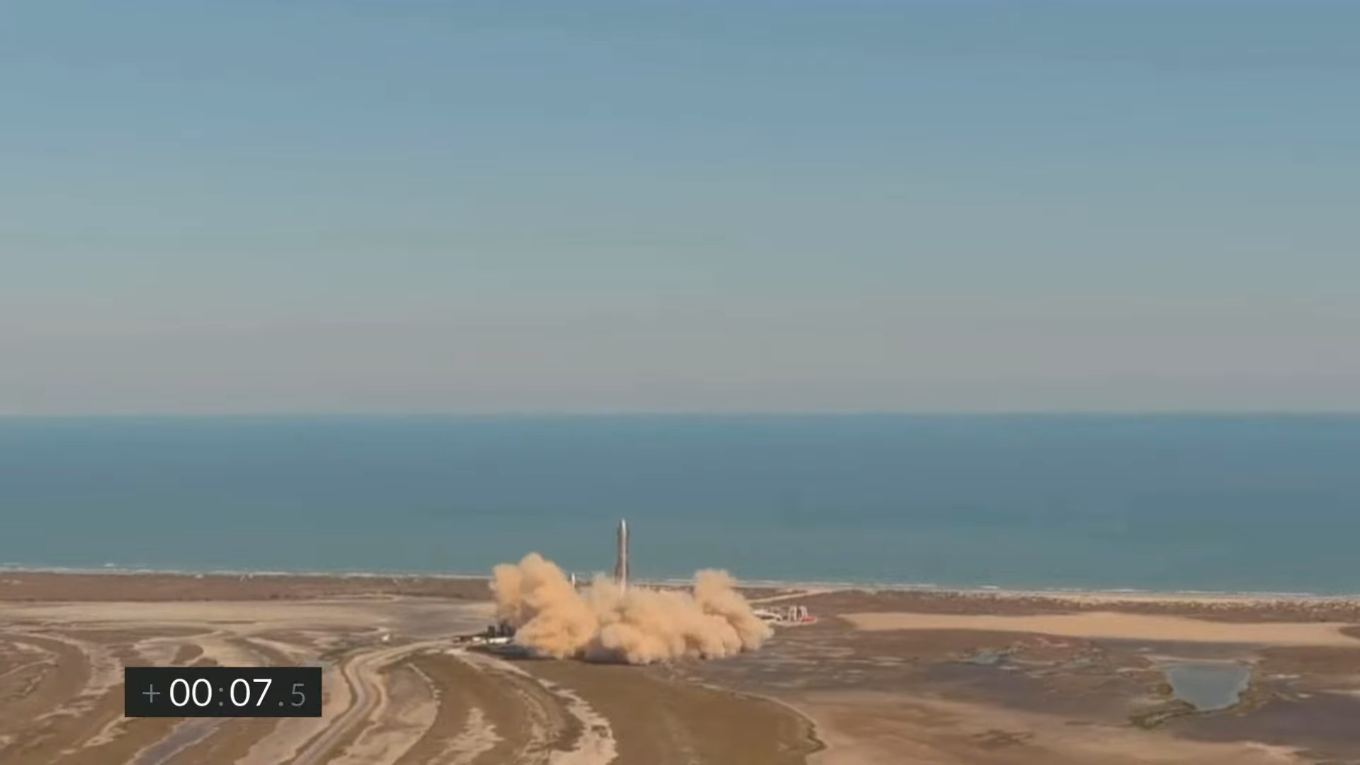Another day, another round of testing (and yes, another explosion). Today, on Tuesday, Feb. 2nd, 2021, flight teams at SpaceX’s launch facility near Boca Chica, Texas, conducted a high-altitude test flight with a Starship prototype. Similar to the previous test in December, the SN9 was powered by three Raptor engines, flew to an altitude of 10 km (6.2 mi), then attempted another “belly flop” to test out its fins and aerodynamic surfaces.
As always, the event was broadcast via live stream by SpaceX, NASASpaceFlight, LabPadre, and several other observers. Like the SN8 test flight, SpaceX’s coverage provided multiple vantage points (landing pad, engine compartment, fuselage, aerial drone, etc.) The flight commenced at 2:25:15 P.M. CST (04:25:15 EST; 12:25:15 PST) when the Starship ignited its three engines and began its ascent.
By 2:27:00 P.M., around a minute and forty-five seconds into the flight, SN9 began shutting down its three Raptor engines, one at a time. At four minutes into the flight (2:29:15 P.M.), ground crews announced that the test vehicle had reached its apogee of 10 km (6.2 mi). At 2:29:48 P.M., all three engines had cut out and the SN9 began reorienting itself for its “bellyflop” maneuver and descent.

The SN9 enjoyed a stable descent, and at 2:31:35, the ground crews attempt to restart two engines and swing the fuselage back around to make a landing burn (with one engine). Unfortunately, one of the two Raptor engines sputtered and failed to reignite, which caused the SN9 to overrotate and throw off a piece of debris before landing on its side.
This was slightly different than what happened with the SN8, which also failed to restart one engine. At that time, a low-pressure issue occurred after the ground crews switched over to SN8’s fuel header tank. This prevented one of the two Raptor engines from reigniting, causing the SN8 to land too hard and explode. It is unclear at its time what led to the issue this time, but it could a fuel line, a tank issue, or a problem with the one Raptor.
But then, as now, Musk and the ground controllers at Boca Chica were generally pleased with the results. In both cases, the prototypes nailed the ascent, engine shutdown, reorientation, and descent elements of the mission. The only thing that hasn’t been validated yet is the switchover during the “flip and burn,” where the engines draw fuel from the header tanks to make their landing burn.

What’s more, there was no damage to SN10, which was recently brought out and stationed near the SN9 launch pad. This is especially lucky since the SN10 is now on deck to conduct the next high-altitude test. This is consistent with SpaceX’s iterative process, where many prototypes are created (sometimes with slight variations in design) and tested to failure to gather as much data as possible.
These high-altitude tests will validate the design, flight systems, and reentry capabilities of the Starship. Once that is complete, SpaceX will commence orbital test flights that will involve both the Starship and Super Heavy booster. This will be the first entirely reusable transportation system and the most powerful launch vehicle ever developed – capable of lifting more than 100 metric tonnes (110 US tons).
These tests also represent the culmination of many years of work and the fulfillment of Elon Musk’s long-term vision to reinvigorate space exploration. This includes sending payloads and crews to orbit, to the Moon, and to Mars. Hopefully, things will go better with the SN10 prototype. At this point, all SpaceX needs is to stick the landing and show that the “turn and burn” can be pulled off, and it’s, “next stop: orbit!”
Further Reading: SpaceX

